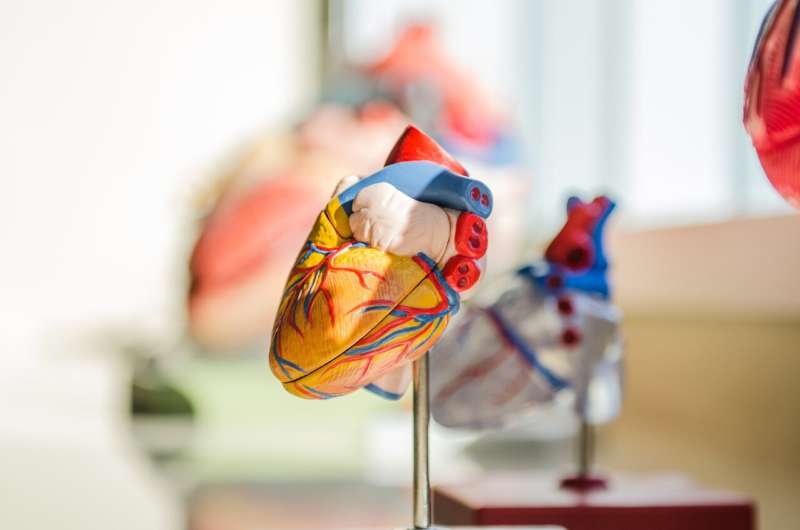
Mitral regurgitation is a disease in which the valve between the left atrium and left ventricle starts to leak, so that blood refluxes with each heartbeat. Typical symptoms of mitral regurgitation are increasing fatigue, increased shortness of breath on physical exertion and water retention in the lungs and legs. Mitral regurgitation is also frequently associated with cardiac arrhythmias such as atrial fibrillation. The disease is associated with a significant reduction in life expectancy and frequent hospital referrals.
The condition is particularly dangerous and particularly common in patients with chronic heart failure. This is indicated by the recent findings of a working group led by Philipp Bartko and Georg Goliasch from the Division of Cardiology of the Department of Medicine II. The working group analyzed data from more than 13,000 patients who meet the criteria for heart failure and who had had a cardiac ultrasound scan at the Division of Cardiology at MedUni Vienna and Vienna General Hospital between 2010 and 2020. Mitral regurgitation can easily be identified by cardiac ultrasound. The working group established a correlation between patient mortality and mitral regurgitation.
“Mitral regurgitation has hitherto often been interpreted as the progression of heart failure rather than as a treatable disease in its own right. The results of the study show that mitral regurgitation is much more prevalent in patients with chronic heart failure than was previously thought and that it has a particularly negative impact on the long-term prognosis of the patient,” explains Georg Goliasch.
The results of the study were published in the British Medical Journal (BMJ) and provide an impetus to make changes in the approach to diagnosis and treatment.
“The results clearly indicate that, even in patients with chronic heart failure, mitral regurgitation should not be interpreted as the progression of heart failure but as a disease in its own right, that can be treated,” says Philipp Bartko.
New treatment options allow high-risk patients to be treated
The fact that mitral regurgitation was hitherto rarely treated as a separate disease in patients with chronic heart failure is related to the treatment options. “Until a few years ago, the only option for treating mitral regurgitation was open-heart surgery. This procedure involves opening up the chest and connecting the patient to a heart-lung machine. This type of intervention is much riskier in patients with chronic heart failure,” explains Bartko.
There has been increased focus on heart valve disease in the last few years. New, minimally invasive treatment options have been developed, so that it is now possible to treat patients with heart valve disease who could not have been treated previously or for whom treatment would have carried a higher risk. So-called transcatheter techniques can be carried out with much less risk. In the minimally invasive procedures, the heart valve is repaired via a femoral vein, and, in most cases, patients are able to go home the following day.
Heart valve diseases become more prevalent with age
The working group’s study results indicate that the probability of developing a heart valve defect increases with age. Because of the increasing life expectancy of the general population, Goliasch therefore expects the number of cases of this disease to increase in the near future. He says that they are prepared for these challenges at Vienna General Hospital/MedUni Vienna: “Not only are we able to repair the mitral valve via a minimally invasive procedure but also most other heart valve leaks and constrictions, such as aortic stenosis or tricuspid valve failure, and replace defective valves with prostheses in a minimally invasive procedure.”
For a few years now, an ultramodern hybrid operating theater has been available for such procedures and this is shared by the Division of Cardiology and the Department of Cardiac Surgery and operated in close collaboration with the Department of Anesthesia, Intensive Care Medicine and Pain Medicine, the Division of Vascular Surgery and the Division of Cardiovascular and Interventional Radiology.
Johannes Angerer, Medical University of Vienna

